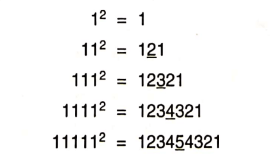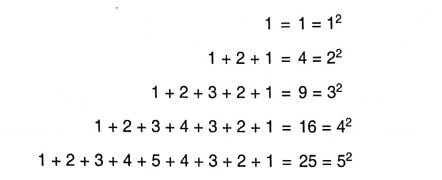Squares and Square Roots: Here, we shall be concentrating on the procedures to find the square roots of positive rational numbers.
Table of Contents
Squares
Look at the examples given below:
a × a = a²
2 × 2 = 4 = 2²
3 × 3 = 9 = 3²
Similarly, 4 × 4 = 16 = 4²
So, we conclude that, the square of a number is the product obtained by multiplying the number by itself only once.
Numbers, such as 1, 4, 9, 16, 25, 36 are called perfect squares.
A given number is called a perfect square or a square number if it is the square of some natural number. These numbers are exact squares and do not Involve any decimals or fractions.
To find out whether a given number is a perfect square or not, write the number as a product of its prime factors. If these factors exist in pairs, the number is a perfect square.
Let us take an example to find whether the given number is a perfect square or not.
Example 1: Which of the following numbers are perfect squares?
- 720
- 154
- 256
Solution:
1. 720
Step 1: 720 = 2×2 × 2×2 × 3×3 × 5
Step 2: In prime factors of 720, one factor 5 is left ungrouped.
∴ 720 is not a perfect square.
2. 154
Step 1: 154 = 2 × 7 × 11
Step 2: No prime factor exists in pairs.
∴ 154 is not a perfect square.
3. 256
Step 1: 256 = 2×2 × 2×2 × 2×2 × 2×2
Step 2: Prime factors of 256 can be grouped into pairs and no factor is left out.
⇒ 256 = (2 × 2 × 2 × 2)2 = (16)2
∴ 256 is a perfect square of 16.
Facts About Perfect Squares
- A number ending with an odd number of zeros (one zero, three zeros and so on) is never a perfect square, e.g. 150, 25000, 350 are not perfect squares.
- Squares of even numbers are always even, e.g. 122 = 144, 202 = 400
- Squares of odd numbers are always odd, e.g. 72 = 49, 212 = 441
- The numbers ending with 2, 3, 7, 8 are not perfect squares, e.g. 32, 243, 37, 368 are not perfect squares.
- The square of a number other than 0 and 1, is either a multiple of 3 or exceeds the multiple of 3 by 1.
- Examples of multiples of 3. 32 = 9, 122 = 144
- Examples of multiples of 3 exceeded by 1. 42 = 16 = (15+1), 132 = 169 = (168+1)
- The square of a number other than 0 and 1, is either a multiple of 4 or exceeds a multiple of 4 by 1.
- Examples of multiples of 4. 62 = 36, 82 = 64
- Examples of multiples of 4 exceeded by 1. 72 = 49 = (48+1), 92 = 81 = (80+1)
- The difference between the squares of two consecutive natural numbers is equal to their sum. Let us take two consecutive natural numbers, 3 and 4.
- 42 − 32 = 16 − 9 = 7 = 4 + 3
- The square of a natural number n is equal to the sum of the first n odd natural numbers. Example:
- 12 = 1 = sum of the first 1 odd natural number
- 22 = 1 + 3 = sum of the first 2 odd natural numbers
- 32 = 1 + 3 + 5 = sum of the first 3 odd natural numbers and so on.
- Squares of natural numbers composed of the only digit 1, follow a peculiar pattern.

We can also observe that the sum of the digits of every such number is a perfect square 1, 121, 12321, 1234321. See, how beautiful patterns of numbers are made below.

Numbers between square numbers
Let us observe some interesting patterns between two consecutive square numbers in a tabular form:
| Consecutive square numbers | Non-square numbers | Number of non-square numbers |
|---|---|---|
| 1 and 4 | 2,3 | 2 |
| 4 and 9 | 5,6,7,8 | 4 |
| 9 and 16 | 10, 11, 12, 13, 14, 15 | 6 |
| 16 and 25 | 17, 18,……..,24 | 8 |
| 25 and 36 | 26, 27,……..,35 | 10 |
Now let us generalize our observations.
- Between 12 = 1 and 22 = 4, there are 2 non-square numbers (i.e., 2 x 1).
- Between 22 = 4 and 32 = 9, there are 4 non-square numbers (i.e., 2 x2).
- Between 32 = 9 and 42 = 16, there are 6 non-square numbers (i.e., 2 x 3).
- Between 52 = 25 and 62 = 36, there are 10 non-square numbers (i.e., 2 x 5).
There are 2n non-perfect square numbers between the square of the numbers, n and (n + 1).

please also share ch 12…*needy*